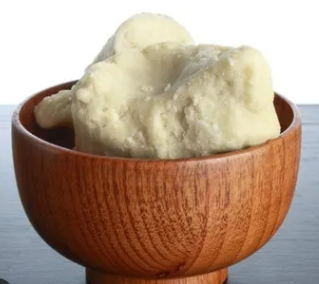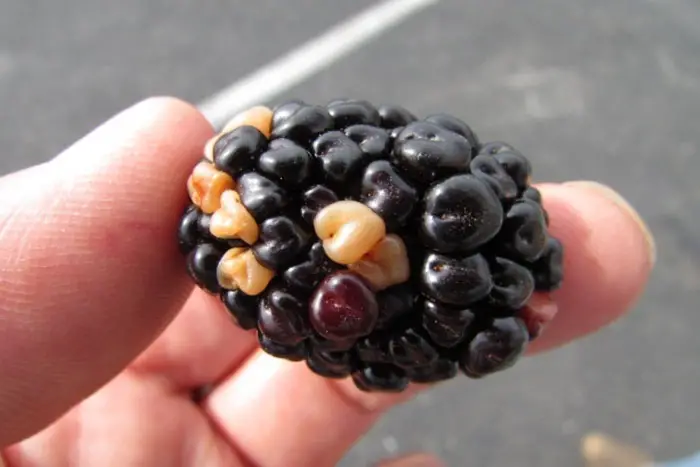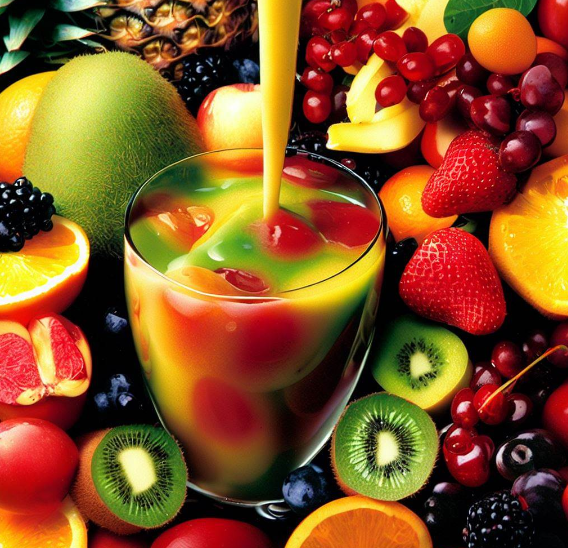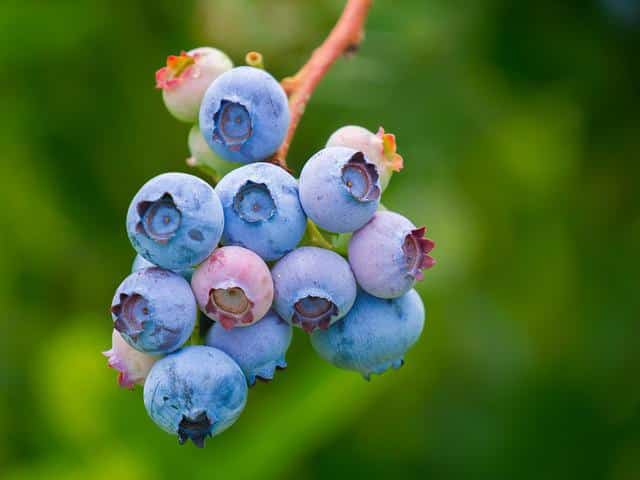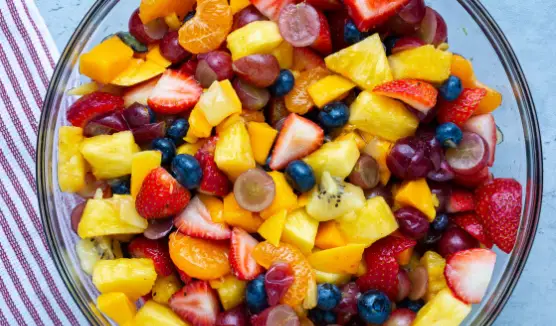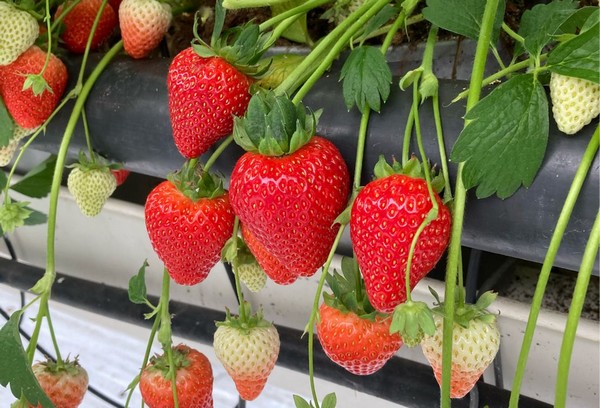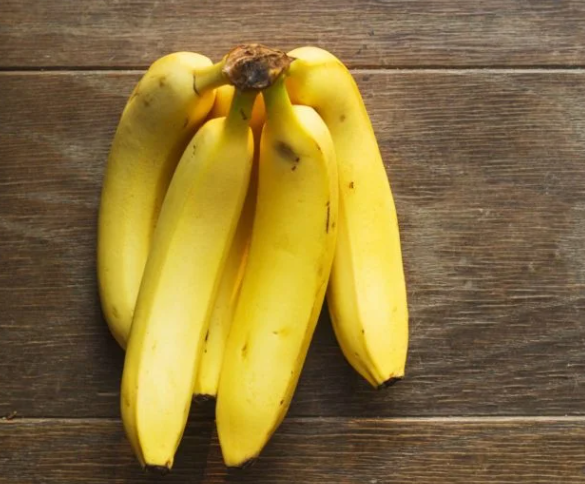Mangoes and pineapples are like sunshine in fruit form, full of sweet juices that make you think of sandy beaches and palm trees. They are both loved for their delicious flavors, but which one wins in a face-off?
We’re going to look at all the things that make mangoes and pineapples special. From how they look and taste to how healthy they are for you and the different ways you can cook with them, as well as when they grow best and where they come from.
While mangoes came from South Asia and pineapples from South America, they’ve both spread all over the planet. Everyone loves them not just because they’re yummy but because you can do so much with them.
Table of Contents
- What They Look Like and Taste
- 1. Mango
- 2. Pineapple
- Their Nutritional Goodies
- 1. Mango
- 2. Pineapple
- Being Healthy With Mangoes and Pineapples
- 1. Mango
- 2. Pineapple
- Fun in the Kitchen
- 1. Mango
- 2. Pineapple
- When Can You Get Them?
- 1. Mango
- 2. Pineapple
- Growing These Fruits
- 1. Mango
- Mango
- Seasonality
- Mango
- Pineapple
- Different Mango Types
- Alphonso
- Kensington Pride
- Tommy Atkins
- Different Pineapple Types
- Smooth Cayenne
- Queen
- MD2
- Mango vs. Pineapple: Main Differences
- Which One Do People Like More?
- Growing Your Own Fruits
- How to Make Food With Mango and Pineapple
- Mango Salsa
- 2. Pineapple Coconut Smoothie
- Conclusion
What They Look Like and Taste
Let’s start with the outside look and taste profile:
1. Mango
Mangoes come in all shapes and sizes and can be yellow, orange, red, or green. They’re really pretty to look at!
When a mango is ripe, it’s soft to touch and has a sweet, tangy taste that’s like a sunny day in your mouth. The inside is usually a lovely orange color and the flesh is nice and soft. Then, there's their wonderful tropical smell—you know it's mango the moment you sniff it!
2. Pineapple
Pineapples have a tough and spiky outer skin with a bunch of green leaves on top. They are often quite big and turn a rich yellow when they’re ready to eat.
Pineapples have sweet but tangy flesh that’s a bit stringy but really juicy. They offer a mix of sweet and sour that wakes up your taste buds and makes them dance!
Their Nutritional Goodies
Mangoes and pineapples both have lots of vitamins and minerals to help you feel great.
1. Mango
Mangoes are bursting with vitamin C which helps keep you from getting sick, and they also have plenty of vitamin A which is awesome for your eyes and skin. They’re full of fiber which keeps your tummy happy, and they have other goodies like potassium, vitamin E, and folate that your body really likes.
2. Pineapple
Pineapples are also loaded with vitamin C for a strong immune system, as well as manganese which is good for your bones. They have a good amount of fiber too, which fills you up and makes you less grumpy when you’re hungry.
Being Healthy With Mangoes and Pineapples
Now let’s talk about the awesome ways these fruits help keep you strong and smiling.
1. Mango
Mangoes are great for your health! The vitamin C helps you fight off germs, and the vitamin A keeps your eyes and skin glowing. The fiber helps your digestive system and might even help you keep a healthy weight. Plus, they have substances called antioxidants that protect every part of you by fighting damage inside your body.
2. Pineapple
Pineapples also have lots of health benefits. The vitamin C is your body’s buddy for fighting off colds and helping it soak up iron from food. Pineapples have a special helper called bromelain, which is not only good for keeping swelling down but also helps you digest food. It’s packed with fighters called antioxidants too, which might even protect you from some types of sickness that are very serious.
Fun in the Kitchen
In cooking, both fruits are superstars because they can be used in so many yummy dishes!
1. Mango
Mangoes are kitchen all-stars! You can eat them as is, cut up in fruity salads, as a smooth topping on yogurt, or whizzed into delicious smoothies. Want something sweet? How about mango ice cream, frozen treats, or silky puddings. For a savory twist, add mangoes to salsas, sauces, or throw them onto salads. They’re amazing as grilled snacks or even on pizzas and tacos!
2. Pineapple
Pineapples can do it all too. They’re perfect in fruit salads and the juice is super refreshing. Desserts like cakes, pies, and yummy upside-down cakes love them. Savory meals? Yep, they go with meat like in Hawaiian pizza, tasty chicken teriyaki, or zesty skewers. You can stir-fry them or make a salsa that’s perfect for chips or as a topping for other dishes.
When Can You Get Them?
It’s important to know when mangoes and pineapples are at their best.
1. Mango
Mangoes grow in warm parts of the world, places that are either tropical or subtropical. They grow in countries like India, Mexico, Thailand, and the Philippines. Depending on where you are, different kinds of mangoes are ripe at different times of the year. Some places are lucky and can get mangoes all year long!
2. Pineapple
Pineapples love the tropics too, and you can find them in places like Hawaii, the Philippines, Thailand, and Costa Rica. The good news with pineapples is that they’re around all year because they don’t have a specific season. But sometimes, depending on where they’re grown, their availability can change a tiny bit.
Growing These Fruits
The way fruits are grown can change their taste, look, and all the good stuff they pack. Let’s close the lid on mangoes first:
1. Mango
“`htmlMango trees need a hot climate to grow well. They thrive when the temperature is between 30 to 100°F (-1 to 38°C). Mango trees like soil that lets water drain easily and need water on a regular basis.
It can take a few years for a mango tree to start making fruit. But when they do get going, they can give you a large amount of fruit every year after that.
Mango
Mango plants grow best in tropical or semi-tropical climates, where it’s 65 to 95°F (18 to 35°C).
Mangoes do well in soil that drains water well and they need a fair amount of water. You can grow mangoes from the top part of a harvested mango and these plants often start to bear fruit in 1 to 2 years’ time.
Seasonality
When picking the best fruit, a big thing to think about is the season it grows in.
Mango
When mangoes are in season depends on the kind of mango and where it’s grown. Usually, they are picked from April to September.
However, different kinds of mangoes ripen at different times. This means mango fans can find various types to enjoy all year round.
Pineapple
In places where it’s always warm, like the tropics, you can get pineapples any time of the year. Some kinds of pineapples might grow more at specific times, but generally there are enough to go around all year.
Different Mango Types
There are a lot of different kinds of mangos, and each one has its own special flavor, texture, and color.
Alphonso
Many people think Alphonso mangoes are the best. They have a bright golden color, are smooth and creamy, and are extra sweet.
Kensington Pride
The Kensington Pride, often called Bowen mango, is popular in Australia. They are green and red, and taste sweet with a bit of tang.
Tommy Atkins
Tommy Atkins mangoes are eaten all over the world. They are mainly red in color and a bit sweet with a tougher texture.
Different Pineapple Types
Similar to mangoes, there are different kinds of pineapples, each with their own unique taste.
Smooth Cayenne
Smooth Cayenne is a very common pineapple kind. It’s completely yellow, has a smooth surface, and is really juicy and sweet. have>
Queen
Queen pineapples are smaller than other kinds. They’re bright yellow, taste very sweet, and have a strong aroma.
MD2
The MD2, also called Golden Sweet or Honey Gold, is also popular. It is yellow, shaped like a cylinder, and tastes tropically sweet with less acidity.
Mango vs. Pineapple: Main Differences
There are several things to look at when you compare mangoes and pineapples:
- Looks: Mangoes come in many bright colors and shapes. Pineapples have a bumpy, pointy outer layer and a bunch of leaves on top.
- Taste: Mangoes are both sweet and sour, while pineapples are both sweet and slightly tart.
- Feel: Mangoes are soft but firm, and pineapples are juicy with rough fibers.
- Good Stuff Inside: Mangoes have lots of vitamin C, vitamin A, and fiber. Pineapples also have a lot of vitamin C and something called bromelain that helps with swelling.
- How to Use Them: You can use mangoes in many ways, in both sweet and salty dishes. Pineapples are often in desserts, drinks, and also salty recipes.
- When to Get Them: Mangoes are ready at certain times based on where they grow. Pineapples are usually available all year in hot places.
Which One Do People Like More?
Both mangoes and pineapples have a lot of fans, but pineapples are liked by more people around the world. They’re often used in different types of cooking, like tropical and Asian foods, because they taste good and you can use them in many ways.
Growing Your Own Fruits
If you love gardening, you can try to grow your own mangoes or pineapples, if the weather is right. Mango trees need a hot place and lots of room, but pineapples can grow in pots or directly in the soil. With some work and waiting, you can enjoy your own tasty mangoes or pineapples.
How to Make Food With Mango and Pineapple
Mangoes and pineapples are great in lots of dishes. Some popular choices are mango smoothies, salsa with pineapple, grilled pineapple with ice cream, salad with mango and beans, and cakes made upside down with mango.
Mango Salsa
Here’s what you need:
- 1 ripe mango, cut into small pieces
- 1 red bell pepper, chopped finely “`
- Chop half a red onion into tiny pieces.
- Take a jalapeño, get rid of the seeds, and also chop it up finely.
- Squeeze the juice from one whole lime.
- Get some fresh cilantro leaves and chop them up.
- Add salt as you like.
Here’s how to put it together:
- Get a bowl and mix in your diced mango, chopped up red bell pepper, finely chopped red onion, and diced jalapeño.
- Drizzle the lime juice over your mixed fruits and veggies, and toss in the chopped cilantro.
- Shake some salt on to taste, and stir everything until it’s all mixed up nicely.
- Wait a little while to let all those flavors mix together well before you serve it up.
- You can enjoy this yummy mango salsa with crunchy tortilla chips, or use it to add some zest to grilled chicken or fish.
2. Pineapple Coconut Smoothie
You’ll need:
- Grab 1 cup of fresh pineapple chunks.
- Pour in 1/2 cup of coconut milk.
- Take 1 ripe banana.
- Use 1/2 cup of Greek yogurt.
- Consider a tablespoon of honey (it’s optional).
- Throw in some ice cubes if you like your smoothie cold (also optional).
Smoothie-making steps:
- Mix the pineapple chunks, coconut milk, ripe banana, Greek yogurt, and honey (if you’re using it) in a blender.
- Hit that blend button until everything looks smooth and creamy.
- If you’re in for a cold drink, toss in those ice cubes and blend it again until they’re all mixed in.
- Pour your smoothie into glasses and, if you want to make it look fancy, add a piece of pineapple or some shredded coconut on top.
- Sip on that smoothie and enjoy the sweet, tropical flavors!
Conclusion
When it comes to mango and pineapple, both offer something special. Mangoes have a unique blend of sweet and tangy flavors, while pineapples give you that juicy burst of sweetness with a hint of tang. Both of these tropical fruits can brighten up your day and dishes with their vibrant tastes and health benefits.
Whether you’re snacking on them just as they are, adding them to recipes, or making them a highlight in your meals, mangoes and pineapples are sure to add some sunshine to your eating habits. Why not embrace these tasty fruits and treat yourself to a mini tropical getaway on your plate?

